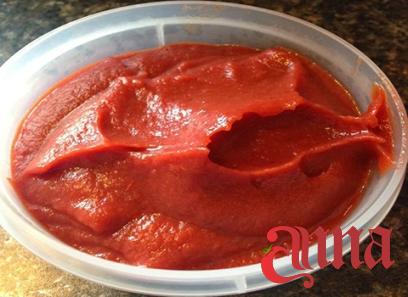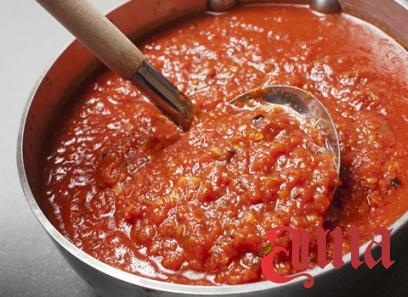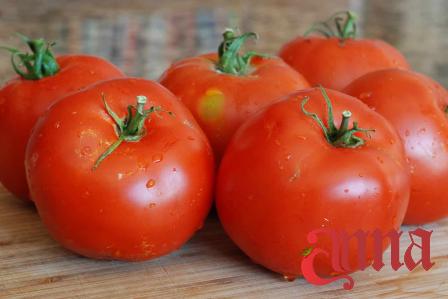Tomato paste is an essential ingredient found in numerous savory dishes, lending its rich and tangy flavors to soups, stews, sauces, and more. While commercial tomato paste is widely available, many culinary enthusiasts prefer the versatility and superior taste of homemade tomato paste. To ensure a consistently remarkable outcome, it is essential to adhere to specific specifications when making homemade tomato paste. In this article, we will explore the key considerations and specifications for creating this culinary delight. 1. Tomato Selection: Selecting the right type of tomatoes is crucial for achieving a robust and flavorful homemade tomato paste. Ideally, choose plum tomatoes, known for their meaty texture and naturally low water content. They should be ripe, firm, and free from bruises or blemishes. Roma, San Marzano, or Amish Paste tomatoes are popular choices due to their concentrated flavor profiles.

.
 2. Quality Control: Maintaining stringent quality control measures throughout the process ensures a superior end product. Start with perfectly ripe tomatoes and ensure they are washed thoroughly to remove any dirt or contaminants. Discard any spoiled or overripe tomatoes to maintain the overall quality of the tomato paste. 3. Tomato Preparation: After washing the tomatoes, remove the stems and any damaged portions. To facilitate the cooking process, it is advisable to blanch the tomatoes by immersing them in boiling water for a short period, followed by immediately plunging them into an ice bath. This process helps to loosen the skins, making it easier to peel them before proceeding.
2. Quality Control: Maintaining stringent quality control measures throughout the process ensures a superior end product. Start with perfectly ripe tomatoes and ensure they are washed thoroughly to remove any dirt or contaminants. Discard any spoiled or overripe tomatoes to maintain the overall quality of the tomato paste. 3. Tomato Preparation: After washing the tomatoes, remove the stems and any damaged portions. To facilitate the cooking process, it is advisable to blanch the tomatoes by immersing them in boiling water for a short period, followed by immediately plunging them into an ice bath. This process helps to loosen the skins, making it easier to peel them before proceeding.
..
 4. Peeling and Seed Removal: To achieve a smooth and creamy texture, it is essential to remove the tomato skins and seeds. Gently peel the blanched tomatoes by scoring a small “X” at the bottom and peeling from there. Alternatively, immerse them in boiling water for 30 seconds before transferring them to an ice bath. Once peeled, cut the tomatoes in half and gently squeeze out the seeds. 5. Cooking and Reduction: Transfer the peeled and deseeded tomatoes to a heavy-bottomed pot. Bring the pot to a gentle simmer over low heat, stirring occasionally to prevent scorching. Simmer the tomatoes until they break down and release their juices, a process that typically takes several hours. The goal is to reduce the tomato mixture considerably until it reaches a thick consistency, intensifying the flavors.
4. Peeling and Seed Removal: To achieve a smooth and creamy texture, it is essential to remove the tomato skins and seeds. Gently peel the blanched tomatoes by scoring a small “X” at the bottom and peeling from there. Alternatively, immerse them in boiling water for 30 seconds before transferring them to an ice bath. Once peeled, cut the tomatoes in half and gently squeeze out the seeds. 5. Cooking and Reduction: Transfer the peeled and deseeded tomatoes to a heavy-bottomed pot. Bring the pot to a gentle simmer over low heat, stirring occasionally to prevent scorching. Simmer the tomatoes until they break down and release their juices, a process that typically takes several hours. The goal is to reduce the tomato mixture considerably until it reaches a thick consistency, intensifying the flavors.
…
 6. Seasoning and Preservation: As the tomato paste thickens, it is crucial to season it to enhance its flavor. Add salt, herbs (such as basil, oregano, or thyme), and spices (like garlic or black pepper) to taste. The seasoning should complement the overall dish for which the tomato paste will be used. When the desired thickness and flavors are achieved, transfer the hot tomato paste into sterilized jars, leaving a small headspace, and seal tightly. Properly preserving the homemade tomato paste ensures its longevity and continued freshness. Conclusion: Creating homemade tomato paste allows culinary enthusiasts to infuse their dishes with unparalleled flavor and quality. By carefully adhering to the specifications outlined above, one can produce a homemade tomato paste that surpasses its commercial counterparts. From selecting the right tomatoes to ensuring proper seasoning and preservation, each step contributes to the overall success of this culinary masterpiece. So why settle for average tomato paste when you can enjoy the unmatched taste and satisfaction of homemade tomato paste?
6. Seasoning and Preservation: As the tomato paste thickens, it is crucial to season it to enhance its flavor. Add salt, herbs (such as basil, oregano, or thyme), and spices (like garlic or black pepper) to taste. The seasoning should complement the overall dish for which the tomato paste will be used. When the desired thickness and flavors are achieved, transfer the hot tomato paste into sterilized jars, leaving a small headspace, and seal tightly. Properly preserving the homemade tomato paste ensures its longevity and continued freshness. Conclusion: Creating homemade tomato paste allows culinary enthusiasts to infuse their dishes with unparalleled flavor and quality. By carefully adhering to the specifications outlined above, one can produce a homemade tomato paste that surpasses its commercial counterparts. From selecting the right tomatoes to ensuring proper seasoning and preservation, each step contributes to the overall success of this culinary masterpiece. So why settle for average tomato paste when you can enjoy the unmatched taste and satisfaction of homemade tomato paste?











Your comment submitted.